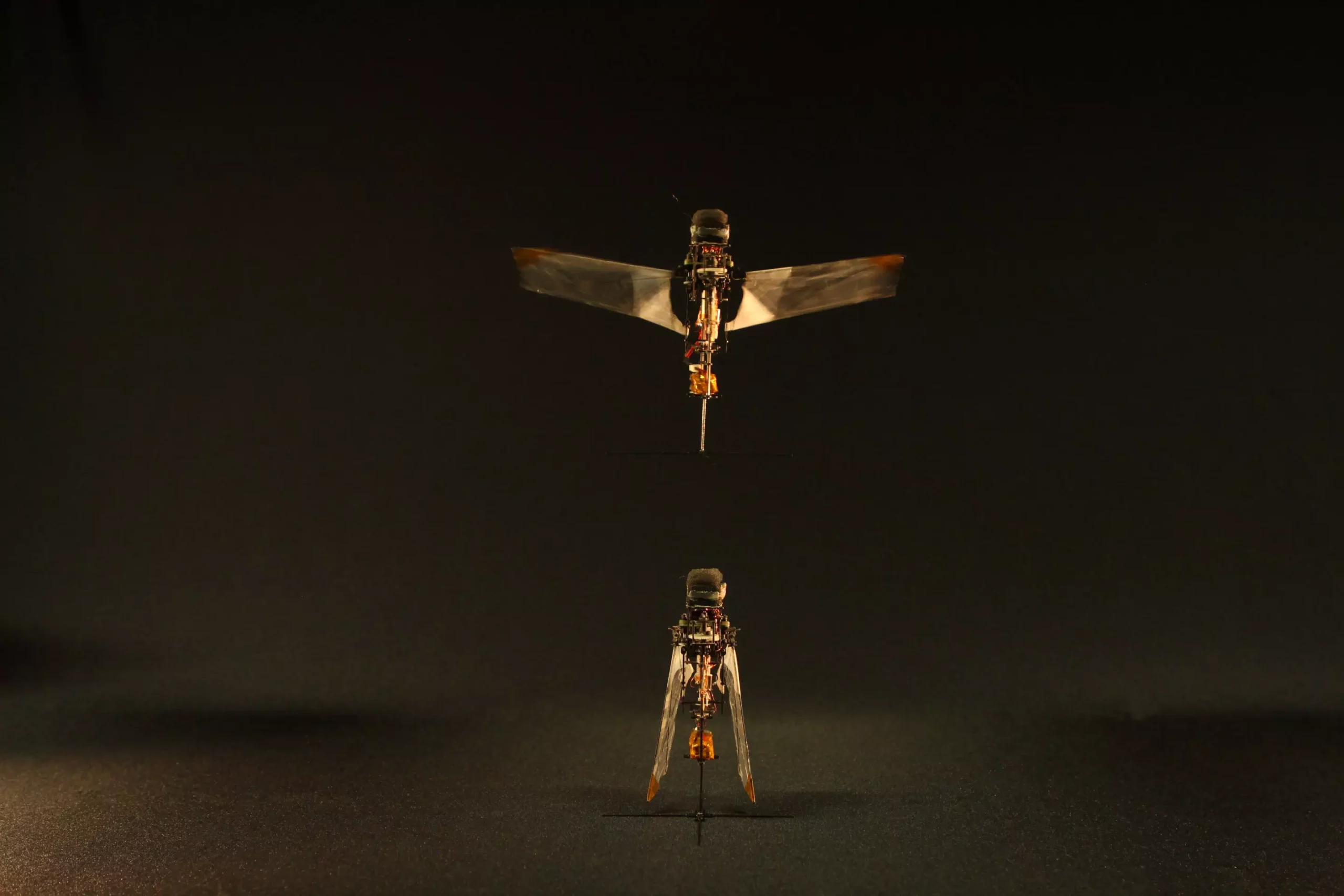The wing dynamics of flying animal species, such as birds, bats, and insects, have long been a source of inspiration for the development of flying robotic systems. While much is known about the wing movements of birds and bats, the processes underlying the wing movements of many insects, like rhinoceros beetles, remain poorly understood. Recent research conducted by a team of researchers at Ecole Polytechnique Fédérale de Lausanne (EPFL, Switzerland) and Konkuk University (South Korea) has shed light on how rhinoceros beetles deploy and retract their wings passively. This insight has led to the development of a new flapping microrobot that mimics the natural wing deployment mechanism of these beetles.
The Passive Wing Deployment Mechanism of Rhinoceros Beetles
In their study, researchers observed that rhinoceros beetles can passively deploy and retract their hindwings for flight without the use of thoracic muscles typically associated with birds and bats. The hindwings of beetles resemble foldable origami structures, allowing them to be neatly folded and stowed under the elytra while at rest, and then passively deployed for flight. This passive wing deployment mechanism was found to be more energy-efficient and less complex than previously thought.
The researchers used their findings to develop a flapping microrobot that weighs 18 grams and can passively deploy and retract its wings similar to rhinoceros beetles. By integrating elastic tendons at the armpits of the robot, they were able to mimic the passive wing deployment mechanism of the beetles. This design allows the microrobot to fold its wings along its body when at rest and passively deploy its wings for takeoff and stable flight without the need for additional actuators.
The flapping microrobot inspired by rhinoceros beetles has a wide range of potential applications. It can be used for search and rescue missions in confined spaces where humans cannot access. Its small scale and ability to fly into narrow spaces make it an ideal candidate for exploring collapsed buildings or other inaccessible areas. Additionally, the microrobot can be used for studying the biomechanics of insect flight, as well as for educational purposes or as an engineering toy for kids.
While the initial tests of the flapping microrobot have yielded promising results, there is still much to be done to further improve its design and test its performance in real-world scenarios. Future studies could explore whether other insects employ similar passive wing deployment strategies, and how these mechanisms could be further leveraged for robotics development. By continuing to build on the insights gained from studying rhinoceros beetles, researchers hope to refine the design of the flapping microrobot and unlock its full potential in various applications.
The passive wing deployment mechanism of rhinoceros beetles has inspired a new generation of flying microrobots that offer unique capabilities and applications. By harnessing the natural mechanisms of insect flight, researchers are paving the way for innovative robotics technology that mimics the efficiency and elegance of nature.


Leave a Reply